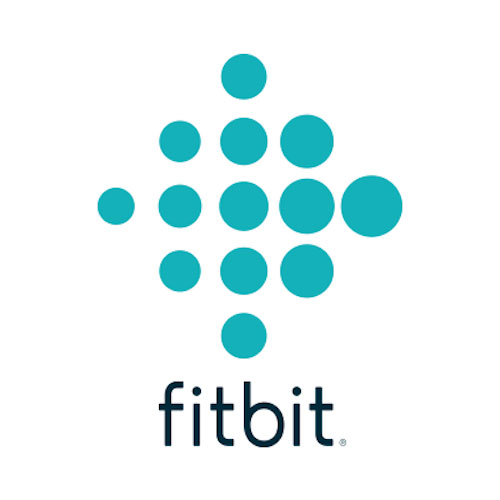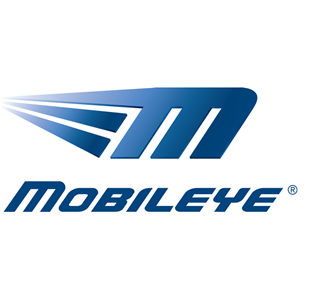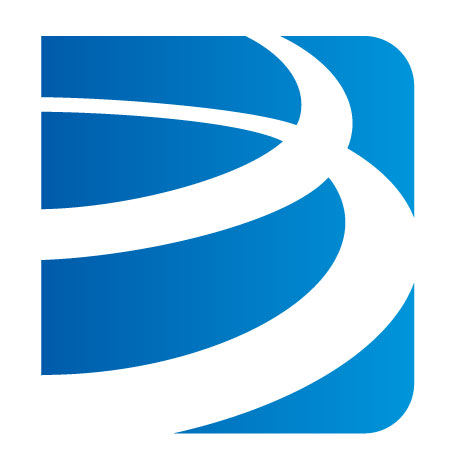Tag: Independent Stock Research
Akamai Technologies: Zeroing in on Zero Trust
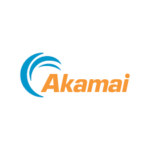 Through internal development and acquisitions, cloud security has grown rapidly to become an $800 million annual run rate business for Cambridge, MA-based Akamai Technologies (NASDAQ: AKAM). The business is on track to generate nearly 30 percent of sales this year, up from 16 percent of sales for all of 2016. Through its early work with Kona Site Defender, which protects websites, web applications, and APIs against cyberattacks, Akamai developed a core competence in protecting against Distributed Denial of Service (DDoS) attacks against data center software assets. Such attacks involve the high-jacking of a large number of computer servers to overwhelm a target website or data center with malicious traffic.
Through internal development and acquisitions, cloud security has grown rapidly to become an $800 million annual run rate business for Cambridge, MA-based Akamai Technologies (NASDAQ: AKAM). The business is on track to generate nearly 30 percent of sales this year, up from 16 percent of sales for all of 2016. Through its early work with Kona Site Defender, which protects websites, web applications, and APIs against cyberattacks, Akamai developed a core competence in protecting against Distributed Denial of Service (DDoS) attacks against data center software assets. Such attacks involve the high-jacking of a large number of computer servers to overwhelm a target website or data center with malicious traffic.
With users, applications and devices moving outside the traditional perimeter of corporate firewalls, new approaches are required to ensure against the infection or theft of corporate data assets. To address this growing problem, Akamai has been developing a new cloud security architecture which it calls Zero Trust. The underlying principle behind zero trust is akin to that promulgated by former US president Ronald Reagan, who described the necessity to “trust, yet verify” any agreement that might be reached with the Soviet Union. In the same way that treaties must be verified, so must the identities of those who present a higher risk to data access, including contractors and employees in remote geographies. In such instances, corporations will wish to only grant precise access to what is needed, rather than broad access to a corporate network.
A key element of Akamai’s approach is centered around technology acquired last year from Janrain, which helps Akamai to decipher login history and access patterns, such as the city and time of day when such logins occur. With technology provided by Janrain, Akamai now helps customers in the area of identity proofing, authentication without using passwords, access control, web fraud prevention, and advertising fraud.
Last week, Akamai announced the tuck-in acquisition of KryptCo, a Cambridge, MA startup, whose engineers have developed mobile-based technology for multi-factor user authentication, which will fit into Akamai’s Enterprise Access Control Framework. Authenticating and assigning users the correct level of access to a data network remains a key technical challenge, as many approaches to access control are vulnerable to phishing attacks, in which user data, including alphanumeric login credentials, are targeted. Kryptco has developed a new approach, which does not require a pin number for authorization.
By next year, cloud security could contribute in excess of $1 billion in revenue and comprise about 34 percent of sales, which would be twice the percentage of revenue contributed just three years ago. The challenges posed by corporate data theft and espionage are likely to keep the category of zero trust in focus for many corporations and government entities for many years to come.
Fitbit: Struggling to Stay in Shape
 With trailing 12-month sales of $1.6 billion, a market cap of $1.8 billion, $658 million in cash and zero bank debt, Fitbit, founded in 2007, and based in San Francisco, CA, is the largest provider of internet-connected health and fitness tracking devices. The company addresses a multi-billion dollar annual revenue opportunity comprised of health-conscious consumers who wish to track daily progress toward achieving weight loss and fitness goals. The company offers a broad product line, consisting of six activity trackers that range in price from $60 to $150 at retail, and two smartwatches, priced at $200 and $300, respectively. Fitness trackers account for roughly 70 percent of revenue currently, with smartwatches accounting for most of the remainder.
With trailing 12-month sales of $1.6 billion, a market cap of $1.8 billion, $658 million in cash and zero bank debt, Fitbit, founded in 2007, and based in San Francisco, CA, is the largest provider of internet-connected health and fitness tracking devices. The company addresses a multi-billion dollar annual revenue opportunity comprised of health-conscious consumers who wish to track daily progress toward achieving weight loss and fitness goals. The company offers a broad product line, consisting of six activity trackers that range in price from $60 to $150 at retail, and two smartwatches, priced at $200 and $300, respectively. Fitness trackers account for roughly 70 percent of revenue currently, with smartwatches accounting for most of the remainder.
In the fourth quarter of 2016, Fitbit hit a brick wall amid execution challenges related to manufacturing and channel management. Missteps included being slow to address excess channel inventory, as well as operational challenges, including a poorly-timed headcount increase of 80 percent during 2016. In response to changing market conditions, management took corrective action at the start of 2017, including a six percent workforce reduction, and streamlining the number of devices offered. In addition, the company was reorganized around fitness devices and enterprise health.
While Fitbit continues to maintain a strong presence in the activity tracking market, the success of the Apple Watch, a higher end, more full-featured family of devices has redefined the market, and, to some degree, siphoned off demand for activity trackers. Fitbit has responded to this changing market dynamic through the introduction of two smartwatches, the Ionic, launched in late 2017, and more recently, the Versa. However, the company continues to face price competition in its core fitness tracker market, and has experienced soft demand for these products in the US in particular, its largest market. As a result, greater emphasis will be placed on smartwatches for future growth.
While smartwatches carry higher ASPs, they also feature lower gross margins than fitness trackers. Near term, the company is unlikely to improve by much its current gross margin, which hovers in the low 40 percent range. In the meantime, the company’s current cost structure prevents it from achieving break-even. While Fitbit maintains a strong cash position of more than $658 million and no debt, it has steadfastly refused to implement a share buy-back, preferring instead to utilize cash for leasehold improvements, along with tuck-in acquisitions, most recently geared to expanding its limited position in health-related services.
The firm’s reliance on the retail channel, including mass merchants and specialty retailers remains a source of concern, given the mixed signals coming from the retail industry, as well as a policy of recognizing revenue based on sell-in, rather than sell-through. As a final investor caveat, we note its dual class share structure guarantees the founders perpetual control of the voting rights of the company, which keeps it insulated from shareholder input. Overall, we see Fitbit as a company with longer term appeal, if it can manage to slim down for future success.
Care.com: A Linked In For Family Care
 With trailing twelve month sales of $165 million, a market cap of roughly $555 million, $96 million in cash and no debt, Care.com has become the leading online destination for finding and managing family care in the US. Like LinkedIn, which matches job seekers with prospective employers, Care.com is focused on matching the needs of families and caregivers creating in essence a one-stop shop for family services throughout the lifecycle of a family or individual household.
With trailing twelve month sales of $165 million, a market cap of roughly $555 million, $96 million in cash and no debt, Care.com has become the leading online destination for finding and managing family care in the US. Like LinkedIn, which matches job seekers with prospective employers, Care.com is focused on matching the needs of families and caregivers creating in essence a one-stop shop for family services throughout the lifecycle of a family or individual household.
Led by founder and CEO Sheila Lirio Marcelo, and Michael Echenberg, EVP of finance and CFO, Care.com targets a large addressable market, as evidenced by the fact that US consumers spent $300 billion on family care services last year, including child day care, housekeepers, nursing care facilities, tutoring, and pet care services. The market remains highly fragmented, served by traditional family care agencies, as well as brick and mortar chains that provide a variety of services.
Last year in the US, consumers spent over $300 billion on family care services, including child day care, housekeepers, nursing care facilities, tutoring, and pet care services. Services providers include nanny agencies, child day care centers, elderly care services, including in- home services and nursing care facilities. Specialized service providers for tutoring and pet care, as well as other online destinations provide a wide variety of competitors in this highly fragmented market.
Family care decisions often reside with a female head of a household, the primary audience targeted by Care.com. Decisions for services providers are often based on word of mouth stemming from personal networks. Decisions must be made with regard to the preference for in-home services, or brick and mortar facilities outside of the home.
Care.com identifies its primary target market as the roughly 46 million US households with income greater than $50,000 per year with either a child under the age of 18 and/or a senior aged 65 and over. The company also includes an estimated 15 percent of households with incomes under $50,000, with similar dynamics. Care.com’s in-home consumer services remain in the early phase of market growth, yet benefit from some compelling demographic facts and trends, which include the rise in single parent households, the prevalence of dual income households, an aging population, and increasing trust in the internet as a destination to help make decisions relating to family, home and health.
In just 10 years, Care.com has carved out an enviable internet presence, which features more than 26 million registered users, comprised of nearly 15 million families, and more than 11 million caregivers. At the end of the most recent quarter, 320,000 paying families purchased a subscription to the company’s caregiver listings, and/or the company’s service for household payroll and tax preparation services.
Key swing factors that will determine Care.com’s ability to rise or fall over the next 12-18 months include it ability to:
- Grow its core US consumer business through continuous improvement to its core matching platform, as well as targeted initiatives to grow senior care, housekeeping, and pet care, leveraging its registered community of more than 26 million members.
- Develop awareness as a trusted source for families and caregivers, through both its own accreditation, as well as the halo effect provided by corporations, non-profits, and potentially insurance plan providers that adopt and promote its services.
- Drive additional revenue growth from three key growth initiatives: employer-sponsored family services for employees, overseas expansion, and marketing programs for daycare, nanny, and elderly care agencies.
For more information on Battle Road’s 24 month assessment of Care.com, please contact info@battleroad.com.
Twitter: Obstacles to Overcome
 As of this writing in late December, Twitter (NYSE: TWTR) continues to struggle, relative to its internet advertising peers Facebook (NASDAQ: FB) and Google (NASDAQ: GOOGL). Despite a flurry of activity in the fall, during which the company was rumored to be on the auction block, the stock has floated back down to earth, and then some, as investors consider several ongoing challenges faced by the company. Among these are persistent management turnover, a struggle to rekindle user growth, and what we perceive to be mediocre earnings quality.
As of this writing in late December, Twitter (NYSE: TWTR) continues to struggle, relative to its internet advertising peers Facebook (NASDAQ: FB) and Google (NASDAQ: GOOGL). Despite a flurry of activity in the fall, during which the company was rumored to be on the auction block, the stock has floated back down to earth, and then some, as investors consider several ongoing challenges faced by the company. Among these are persistent management turnover, a struggle to rekindle user growth, and what we perceive to be mediocre earnings quality.
Management Turnover Continues
In the first 18 months following its IPO in November of 2013, Twitter was plagued by rampant management turnover, including a 60-day interval, during which three of the top five executives listed in its S-1 filing resigned or were reassigned to new posts in the company. Jack Dorsey, Twitter’s Chairman and co-founder, became CEO in October of 2015, and, until recently, management turnover had stabilized.
On November 7th Twitter COO Adam Bain informed the company of his decision to resign, after a six year stint, which featured a role as head of advertising sales. Two days later, Twitter announced that it had appointed CFO Anthony Noto as COO. Noto will continue in a dual role as COO and CFO until a new CFO is hired. The COO position is crucial, as Twitter’s CEO Jack Dorsey continues to split his time between Twitter and Square, another company that he co-founded. Noto, who had been in charge of live content, in addition to his CFO responsibilities, is now in charge of global advertising sales, data, MoPub, as well as global partnerships and business development.
Then on December 20th, Twitter’s chief technology officer, Adam Messinger, resigned. On the same day, Twitter’s VP of product, Josh McFarland let it be known that he was leaving the company to join a venture capital firm.
Working to Rekindle User Growth
Twitter reported its lowest-ever rate of year over year revenue growth in Q3 2016, as advertising sales rose just six percent over the prior year. This was the seventh consecutive quarter that sales growth declined. Monthly active users (MAUs) grew by just three percent in the last quarter. In addition, the company has, for several years, declined to report the number of daily active users, which are suspected to be considerably lower than its 317 million MAUs.
Twitter is working behind the scenes to induce users to utilize the service more frequently. Efforts underway include the addition of new content, such as Thursday Night Football, as well as the application of machine learning and artificial intelligence to improve the user experience, particularly in the area of notifications, and home timeline, where the majority of user time is spent. The company is focusing in particular on improving the relevance of user notifications, and emphasizing topics and interests, rather than following people per se, as methods to improve user engagement.
Earnings Quality Remains Poor
Like most VC-backed West Coast technology companies, Twitter utilizes a healthy dose of stock-based compensation, which reduces the near term cost of compensating employees, but passes the longer term cost along to shareholders, who are left to absorb the increased issuance of stock in the form of reduced earnings per share, once the options grants are exercised. In the third quarter of 2016, stock-based compensation accounted for 32 percent of gross operating expenses. SBC is particularly noteworthy within research and development, where it accounted for 49 percent of gross research and development expenses in the third quarter.
Another area of concern regarding Twitter’s EBITDA presentation is how it accounts for research and development costs. Twitter continues to capitalize, rather than expense, a considerable portion of its research and development costs. While this is a perfectly legal practice, we believe R&D costs should be expensed in the period in which they are incurred, rather than capitalized as assets that can be amortized later through COGS, at which point the non-cash amortized expense is viewed by many to be inconsequential.
Twitter continues to languish relative to its internet advertising peers. Our sense is that the company still has obstacles to overcome, as its management ranks continue to shift, user growth remains tepid, and the company’s earnings quality remains low.
Mobileye: Behind the Delphi Automotive Partnership
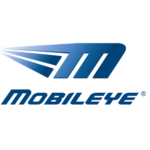 While much attention has been focused on Mobileye’s (NYSE: MBLY) decision to dissolve its OEM supplier relationship with Tesla Motors (NASDAQ: TSLA), a more important development in our opinion is Mobileye’s decision to work more closely with Delphi Automotive (NYSE: DLPH) on a new OEM solution focused on autonomous driving.
While much attention has been focused on Mobileye’s (NYSE: MBLY) decision to dissolve its OEM supplier relationship with Tesla Motors (NASDAQ: TSLA), a more important development in our opinion is Mobileye’s decision to work more closely with Delphi Automotive (NYSE: DLPH) on a new OEM solution focused on autonomous driving.
On August 23rd Mobileye announced a new partnership with Delphi Automotive PLC (Delphi hereafter), one of its largest Tier One customers, with whom it has been working for over ten years. The new arrangement envisions the creation of a turnkey autonomous driving package for the most advanced stages of driving automation. A major focus for Delphi is electronics and safety, a business segment through which it provides software, systems, and components for car passenger security, comfort and safety, including passive and active safety electronics, displays, and mechatronics. Delphi’s products for ADAS include technology provided by Mobileye, as well as a number of other suppliers, whose products range from radar, camera systems, and software, to sensors.
Like many of Mobileye’s Tier One customers, Delphi has been working on various initiatives relating to advanced driver assisted and driverless car features. A little more than a year ago, Delphi acquired Ottomatika, a Carnegie Mellon University spin-out, to enhance its active safety and automated driving capabilities. Delphi is now in the process of integrating Ottomatika’s automated driving software into its active safety systems to create a platform to make human-like decisions. Delphi also made an equity investment in Quanergy in order to develop low-cost, high performance solid state LiDAR products that will provide a complete vehicle perception solution for Level 3 and Level 4 automation applications for semiautonomous or driverless vehicles.
A key part of the agreement between Mobileye and Delphi calls for the companies to combine efforts on machine learning to create a new class of machine intelligence that mimics human driving, including ways for a driverless car to negotiate with other vehicles to merge into urban traffic, a key challenge for achieving real-world automated driving. Under the terms of the agreement, the two companies will work toward creating a full turn-key package for Level 4 and Level 5 automation by 2019. Beginning at the Consumer Electronics Show in January, the companies plan to demonstrate a prototype vehicle. Fleet testing is slated to begin in 2017.
Even though Delphi is a Mobileye customer, Delphi’s R&D projects raised the suspicion in our minds that the companies might compete against one another in the future. However, the new partnership makes clear that the two will be coordinating their efforts for a number of reasons, not the least of which is a common competitive threat, as each company seeks to blunt the impact of Continental AG and Robert Bosch Group, two German-based Tier One automotive suppliers, both of whom have ambitious driver assisted technology initiatives underway. Since Bosch, Continental, and Delphi each work with all of the largest 25 global car makers, much is at stake. Mobileye has the ability to help Delphi create a truly differentiated driverless car product, and in doing so, will strengthen one of its key alliances.
Brooks Automation: Poised for Recovery?
 Is Brooks Automation poised to Participate in Industry Upswing?
Is Brooks Automation poised to Participate in Industry Upswing?
With trailing 12 month sales of $546 million, and a market cap of $680 million, Brooks Automation (NASDAQ: BRKS), based in Chelmsford Massachusetts, is a leading provider of automation equipment and services to the semiconductor, LED, and consumer electronics industries, which collectively account for 80 percent of sales. Life sciences accounts for the remainder, and is comprised of biological sample storage systems, consumables, and services, which leverage Brooks’ core competence in cryogenic and automated manufacturing equipment.
The cyclical semiconductor business remains Brooks’ largest and most profitable segment, where it serves over 200 OEM customers, including Applied Materials (NASDAQ: AMAT), Tokyo Electron (OTC: TOELY), Lam Research (NASDAQ: LRCX), and KLA-Tencor (NASDAQ: KLAC), who are in the midst of merger discussions. Brooks also conducts business directly with many of the leading semiconductor device makers, including Samsung, Toshiba, Intel (NASDAQ: INTC), Taiwan Semiconductor Manufacturing Company (NYSE: TSMC), and Micron (NASDAQ: MU). Over the last several months, Brooks has begun to see growing demand for its vacuum robots, and contamination and control solutions, which comprise about 40 percent of semi cap equipment sales.
Four years ago Brooks embarked on a strategy to divest non-core businesses, expand in the semiconductor equipment business, and diversify into life sciences, primarily through acquisition. Brooks Life Sciences parlays the company’s core competencies in cryogenics and automation into the cold storage, retrieval, and tagging of biological samples. Brooks has acquired five companies in the last four years, and the division now claims over 100 customers, including the top 20 drug and biotech companies.
The all-cash $128 million acquisition of privately-held, BioStorage Technologies, an Indiana-based provider of sample management services, was completed late last year. The business is on track to generate over $40 million revenue, and in doing so, has enabled the life sciences segment to achieve a $100 million annualized run rate, with services and consumables accounting for about 60 percent of the total. Though not yet profitable, Brooks Automation narrowed the operating loss in the segment to $2 million in the March 31 quarter, and with a recent restructuring, targets profitability by the end of the September quarter.
Three key swing factors will determine Brooks Automation’s fate over the coming year, specifically whether it:
- participates in the steady recovery of spending in the semiconductor industry, fueled by a resurgence in demand for front-end systems as OEMs and semiconductor customers shift their emphasis to 10 nanometer process technologies.
- achieves profitability in the Life Science segment through greater efficiency, execution, and a more predictable mix of consumables and services for cold storage samples.
- achieves operating margin expansion more broadly, as it concludes a number of cost reduction initiatives, and begins, at long last, to focus on organic, rather than acquisition-driven growth.
As Brooks confronts the above-mentioned challenges, the company provides investors with a degree of downside protection, given its historically strong free cash flow generation, a good balance sheet, with $68 million in cash, or $1.00 per share, no debt, a tangible book value of $3.61 per share, and a compelling valuation vis-à-vis its SMID cap peers in the semiconductor capital equipment business. The company also investors with a dividend, whose current yield is four percent.

